Food lines stretch for hours, hospitals cancel surgeries and reduce dialysis, and mothers cook over open fires, burning old shoes for fuel. Gaza is running out of everything—fuel, medicine, clean water. Israel keeps the enclave under total blockade, insisting it is necessary until the hostages taken by Hamas are released. But international humanitarian organizations warn: this is no longer a crisis, but a systemic and deliberate dismantling of all survival infrastructure. For the two million people trapped inside, it means not just suffering, but the strategic destruction of life itself.
For more than two months, the Gaza Strip has been under total isolation. Israel has sealed off all routes for humanitarian aid—blocking food, medicine, and fuel. The official justification for the blockade is the hostages held by Hamas. But behind this diplomatic rationale lies the daily reality of two million people trapped in an exhausting and enclosed crisis.
Munir Al-Bursh, director of Gaza’s health ministry, admits that each day it becomes harder to answer the phone. Hundreds of calls come in—from doctors desperately searching for ways to save their patients, and from the patients themselves, suffering from kidney failure or heart conditions. They all ask the same question: if there’s no medicine, is there anything else that can be done? "I have nothing to tell them," says Al-Bursh. "In most cases, these patients simply die."
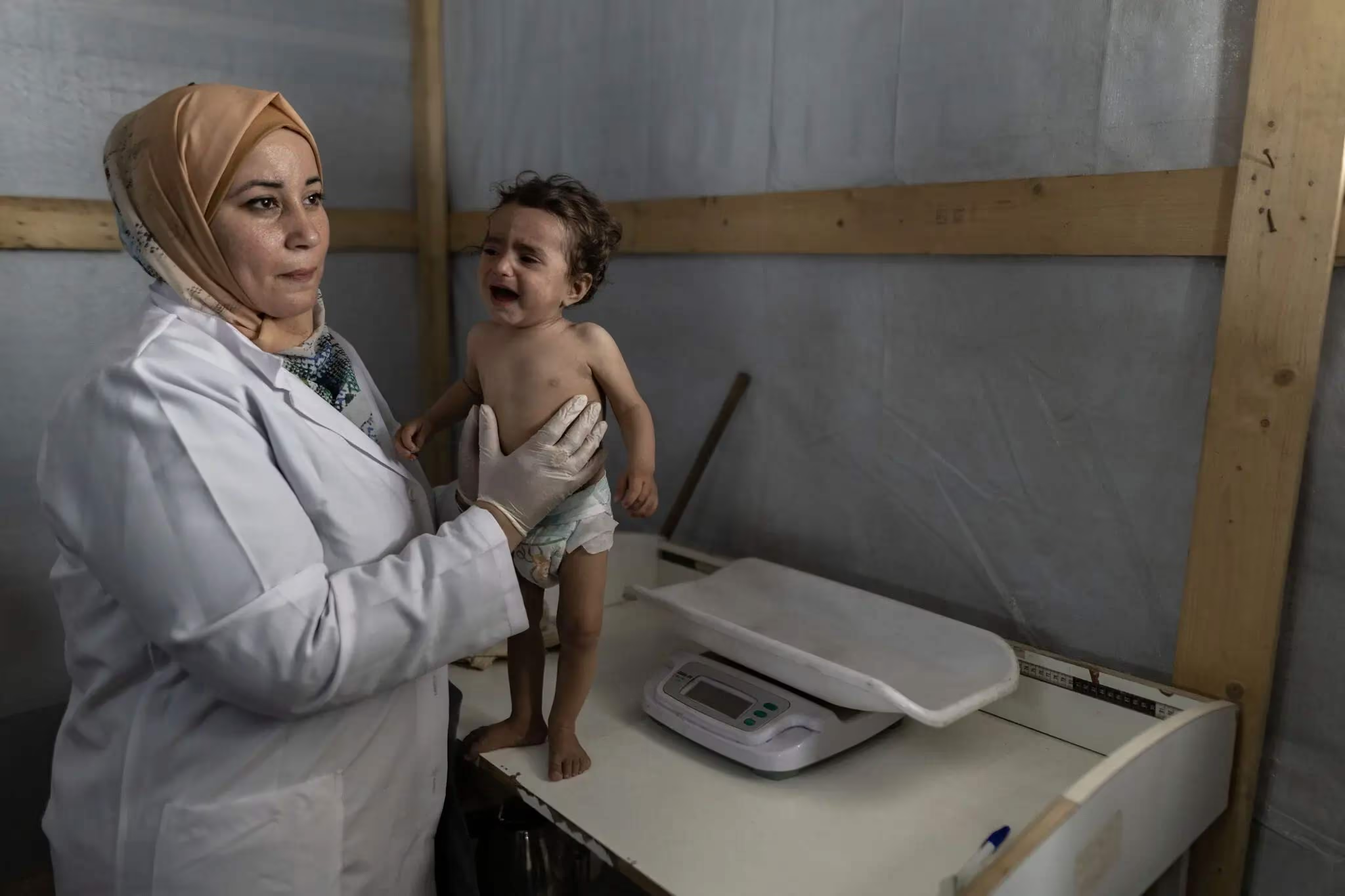
Examining a child for signs of malnutrition has become a routine part of medical practice in Gaza.
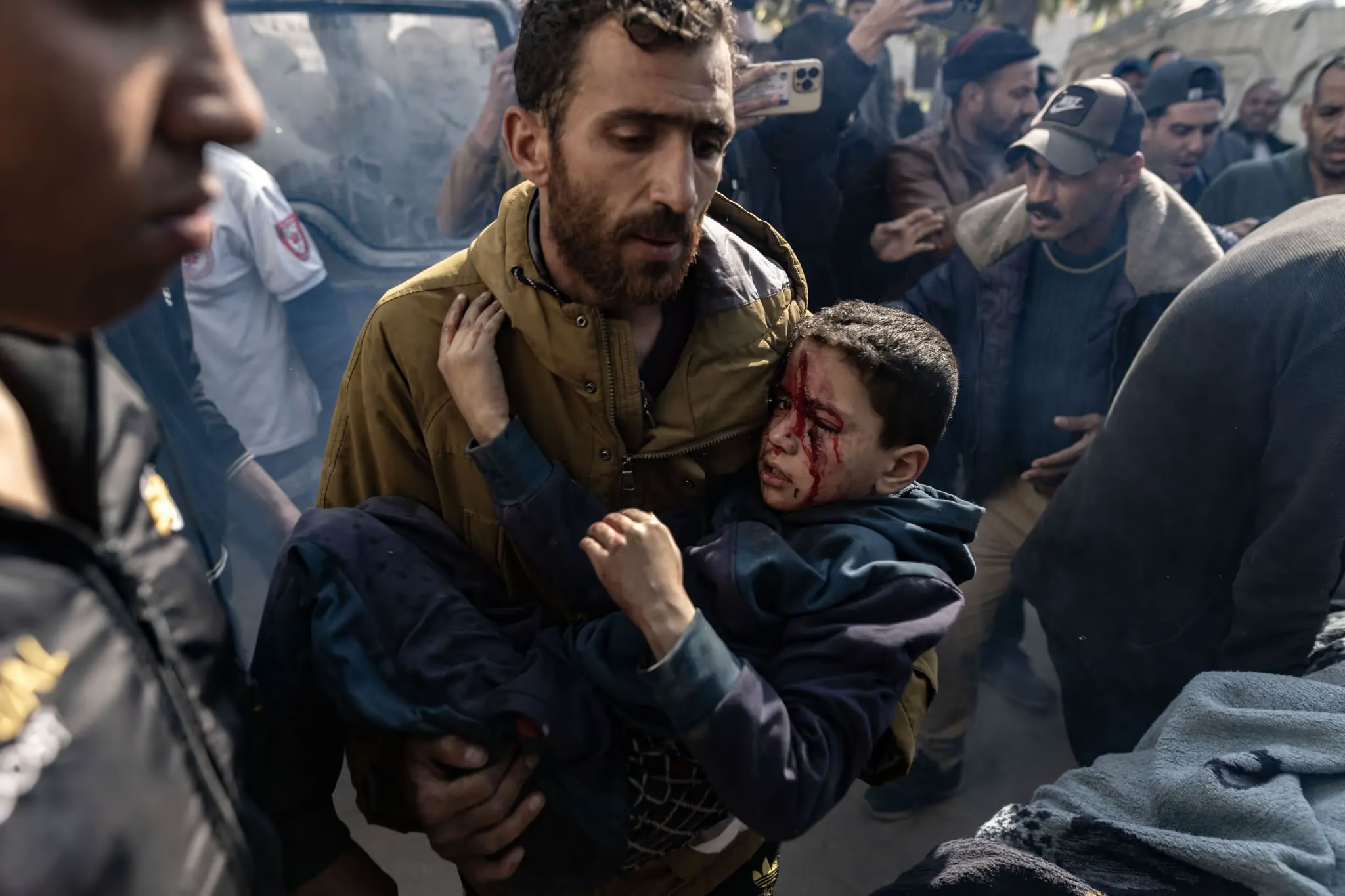
A child injured in an Israeli airstrike on Gaza in April. Medical facilities are overwhelmed, lacking medicine and equipment, as the number of wounded continues to rise.
Israeli authorities insist that their actions comply with international law. They cite supplies delivered during the ceasefire period and argue that these resources should suffice. However, an increasing number of international organizations — from the UN to EU representatives — accuse Israel of using humanitarian aid as a tool of political pressure. A full blockade, they stress, violates international obligations.
For Gaza's residents, such legal arguments translate into the collapse of everyday life. The territory, under partial blockade since 2007 when Hamas came to power (with Egypt’s support), has now entered a state of total economic and medical breakdown.
As food, clean water, and medicine run out, preventable diseases are spreading in Gaza — and with them, the number of deaths from conditions that would otherwise be treatable in peacetime. Humanitarian organizations warn: the aid system is on the brink of collapse.
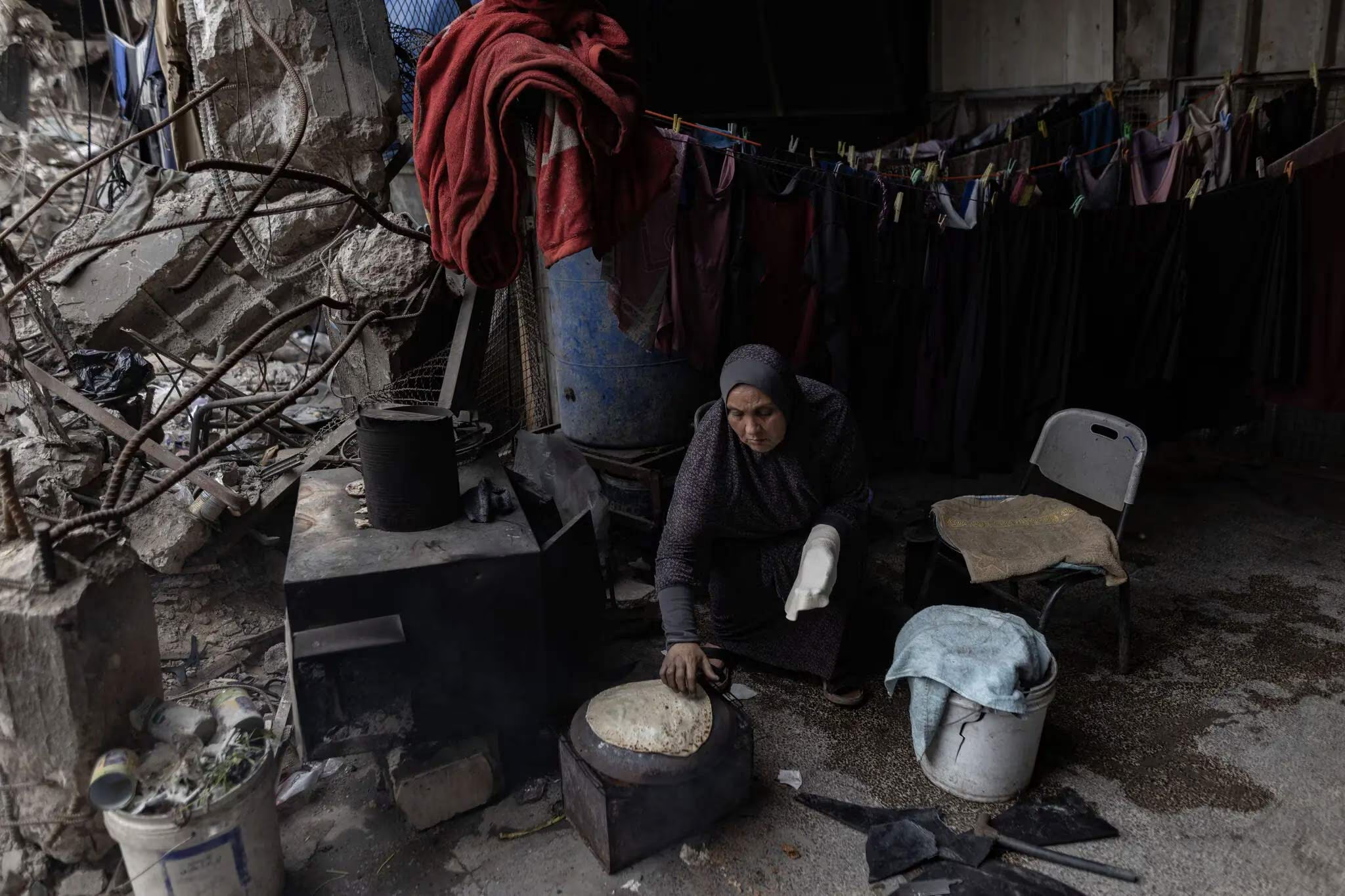
Bread being prepared.
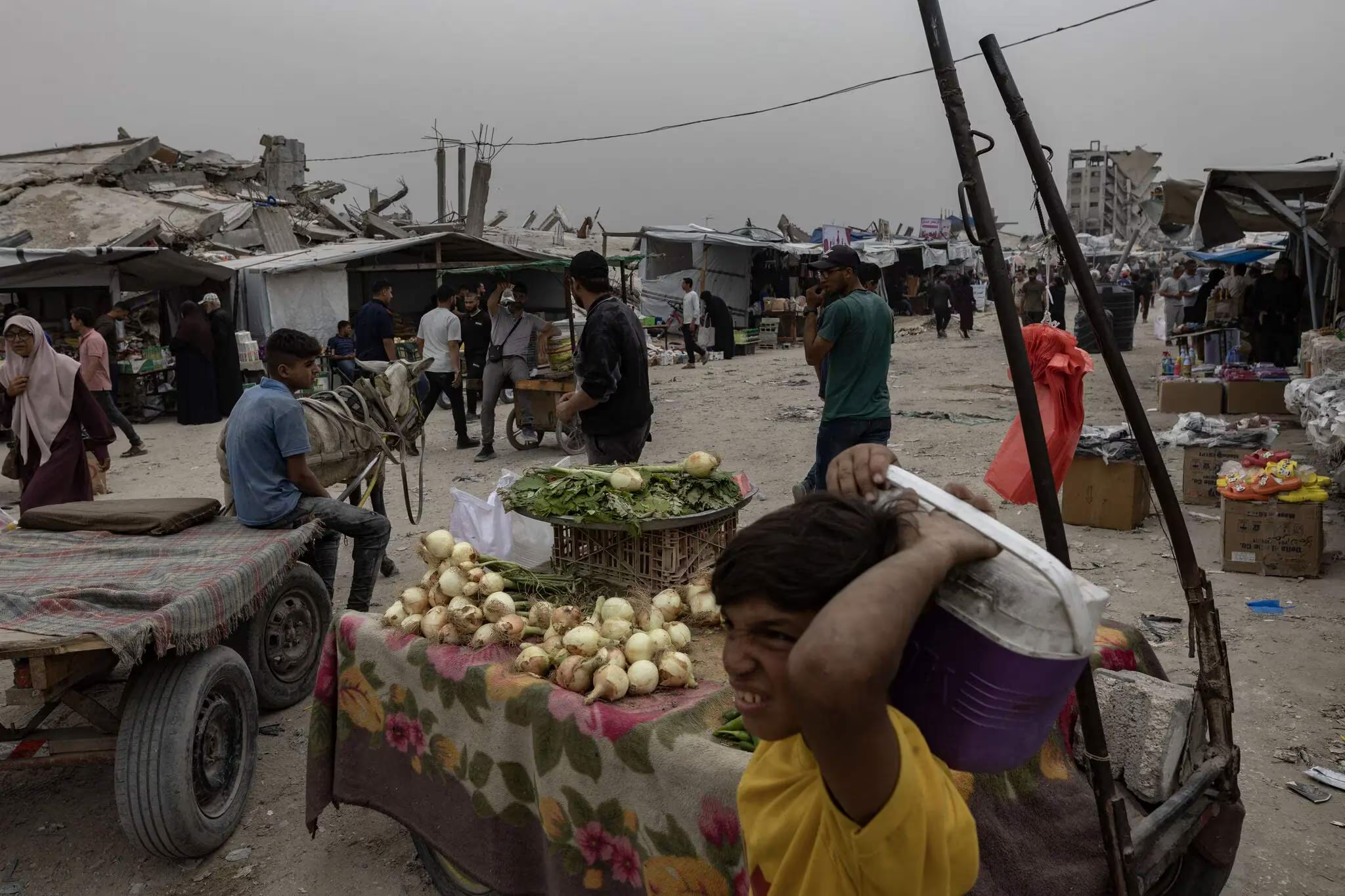
Locals say the prices of remaining food are astronomical.
"We once again appeal to the Israeli authorities and to all those who can speak to them: end this cruel blockade," said UN humanitarian aid coordinator Tom Fletcher. "In the face of civilians, all justifications are powerless. I deeply regret that we have failed to persuade the international community to stop this injustice."
Every morning in Gaza now begins with the same question: how to survive one more day.
Bakeries are closing one by one. At the end of April, the UN agency for Palestinian refugees reported that flour reserves had been exhausted. The World Food Programme distributed its last supplies to charity kitchens. For many — especially among the 90% of the population displaced into tent camps — these are the only meals they can get. But even these are vanishing: some kitchens have already been looted amid growing hunger. Thirty-year-old construction worker Ahmed Mohsen spends two hours each day waiting in line for free food.
Food prices that can still be found are staggering even by wartime standards. Canned vegetables, locals say, now cost about eight dollars — ten times more than before the blockade. A sack of flour, once priced at five dollars, now sells for three hundred.
"Imagine not having eaten meat, boiled eggs, or even an apple for months," says Mohsen.
Thirty-two-year-old Ahmad al-Nems, a displaced vendor in Gaza, survives on remnants of flour, lentils, and beans. His family tries to stretch these supplies for weeks, allowing themselves one meal a day. They cook over a fire, burning old shoes — there's no other fuel.
"We eat once a day, during the day — and that's it," he says. "It’s hard to breathe when I see my brothers and sisters still hungry."
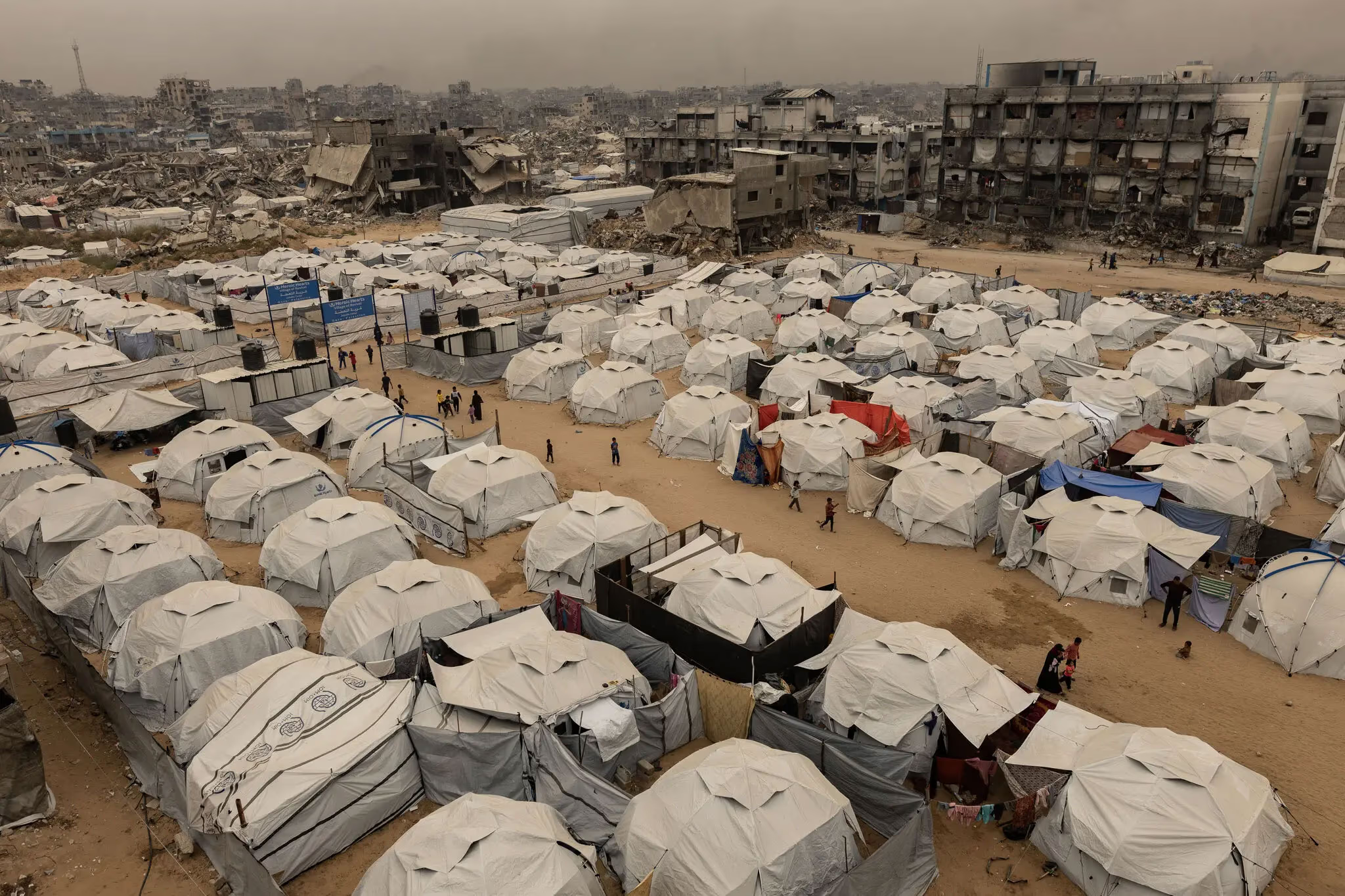
Camp for displaced residents of Gaza.
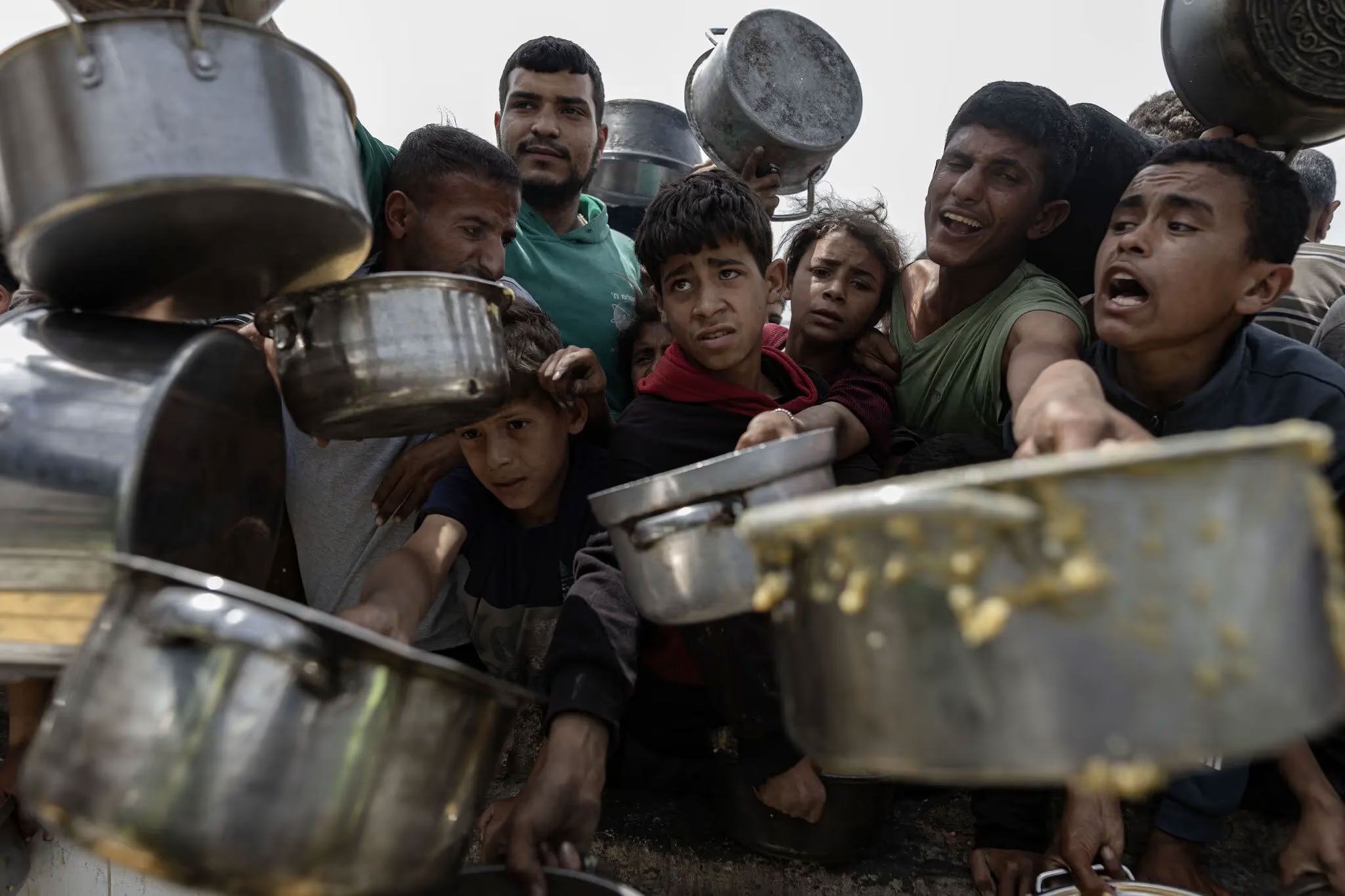
For many residents, the few operating charity kitchens remain the only source of food.
With support from partner organizations, the UN is conducting a reassessment under the Integrated Food Security Phase Classification (IPC) system to determine whether conditions in Gaza now meet the official threshold for famine. Preliminary findings are alarming: 91% of the assessed population—nearly the entire enclave—suffers from severe food insecurity. Most are at "emergency" or even "catastrophic" levels.
The Israeli agency responsible for coordinating humanitarian aid insists that the UN-cited reports contain serious methodological and factual flaws. But such claims do not negate the visible reality: more and more images and videos of emaciated children are appearing, shared by Palestinian doctors and journalists.
Hunger is also wreaking havoc on Gaza’s healthcare system. Burn victims from Israeli airstrikes struggle to recover; their malnourished bodies reject skin grafts.
At Al-Shifa Hospital, Dr. Ghazi al-Yazji, head of nephrology, watches helplessly as his patients’ chances of survival diminish. "Dialysis requires a proper diet, but most patients survive on canned food," he explains.
Due to medicine shortages, he has reduced dialysis sessions from three to two times per week and shortened their duration. This leads to a toxic buildup in the body—a slow but deadly process. "The alternative is to stop dialysis altogether. And that’s a death sentence," Yazji says.
He adds that stocks of diabetes and hypertension drugs are nearly depleted, and there are virtually no catheters left for cardiac patients. Gaza’s health ministry reports that 37% of essential medicines are currently unavailable.
Israeli officials maintain that large volumes of humanitarian aid were delivered to Gaza during the ceasefire. According to them, those shipments should suffice to meet basic needs. They also accuse Hamas of deliberately hoarding part of the supplies, depriving the broader population of access.
Humanitarian agencies, however, report that many critical items—including fresh food, medicines, cooking gas, and fuel for ambulances—have simply run out.
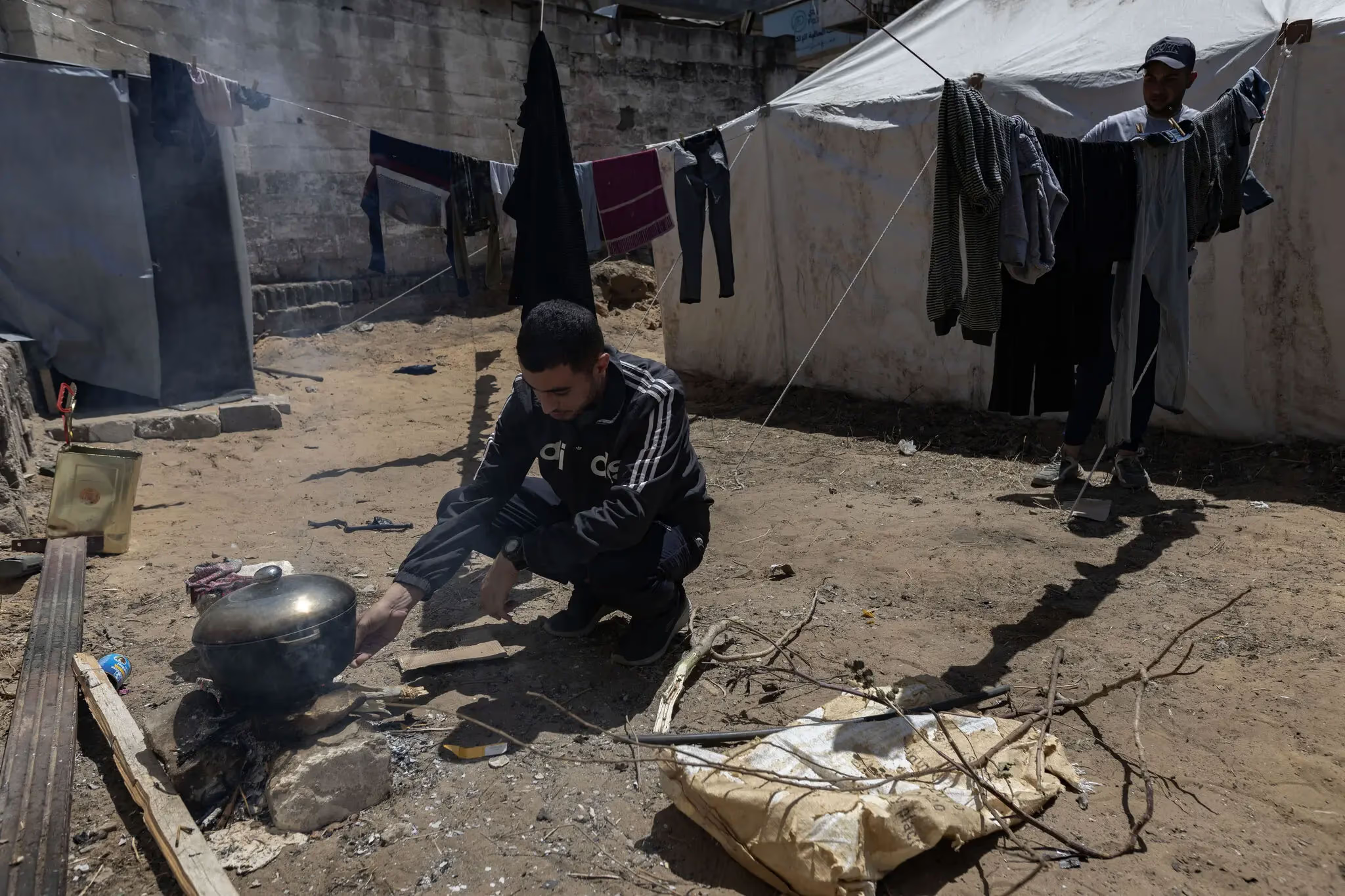
"Drinking water has become a luxury, and people have had to adapt," says Ahmed Al-Ijla, a father of three from Gaza.
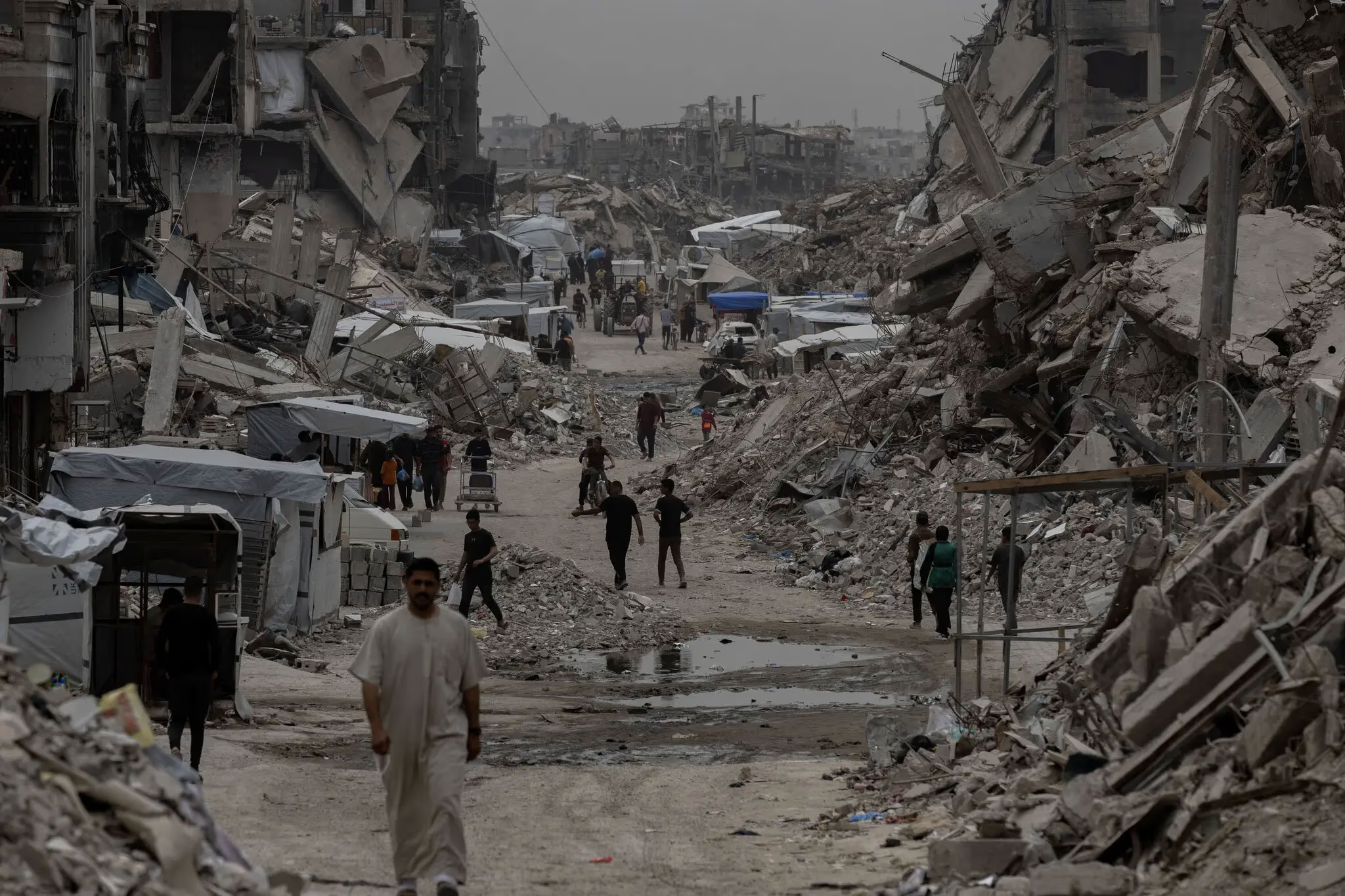
New evacuation orders and renewed bombardments have further restricted access to humanitarian aid warehouses, delivering another blow to Gaza residents—many of whom are already displaced and living in dire conditions.
Even when aid is technically available, delivering it has become nearly impossible. Since the resumption of hostilities, Israel has steadily expanded the list of "evacuation zones"—areas declared off-limits. According to UN estimates, this has forced around 420,000 people to flee their homes again. Roughly 70% of the enclave is now effectively cut off—no aid or humanitarian workers can reach these areas.
Delivering supplies to such regions requires coordination with the Israeli military. But, as representatives of several international agencies stress, the process has become unbearably complex: endless bureaucracy, frequent denials, and a lack of transparency. Israeli agencies responsible for humanitarian access declined to comment and referred all inquiries to the Prime Minister's Office, which also did not respond.
The blockade has paralyzed even water supply infrastructure. Paula Navarro, water and sanitation coordinator for Doctors Without Borders in Gaza, notes that generators at the main desalination plant are operating at just 10% capacity due to power outages. Even that minimal output is now in jeopardy, as fuel supplies in storage are out of reach. "It's estimated that about 90% of the fuel in Gaza is currently inaccessible due to evacuation orders," she explains.
Even so, most of the population still lacks access to clean drinking water. Water infrastructure has been destroyed, and queues at water trucks stretch for hours. Many are forced to drink from shallow wells or damaged Israeli pipelines. Sanitary standards are not being met, leading to outbreaks of diseases such as hepatitis, diarrhea, and scabies.
"Drinking water has become a rarity, and people are adapting," says Ahmed al-Ijla, a father of three. Like most Gaza residents, his family drinks brackish water. "The blockade is written on people’s faces—everyone looks pale, nerves are frayed."
Dr. Ghazi al-Yazji from Al-Shifa Hospital admits he still tries to advise patients on maintaining a healthy lifestyle. But each day, it feels more like an act of desperation. "Without urgent intervention and the resumption of supplies, we will keep losing more patients," he says. "We are on the brink of catastrophe."
Might Over Right
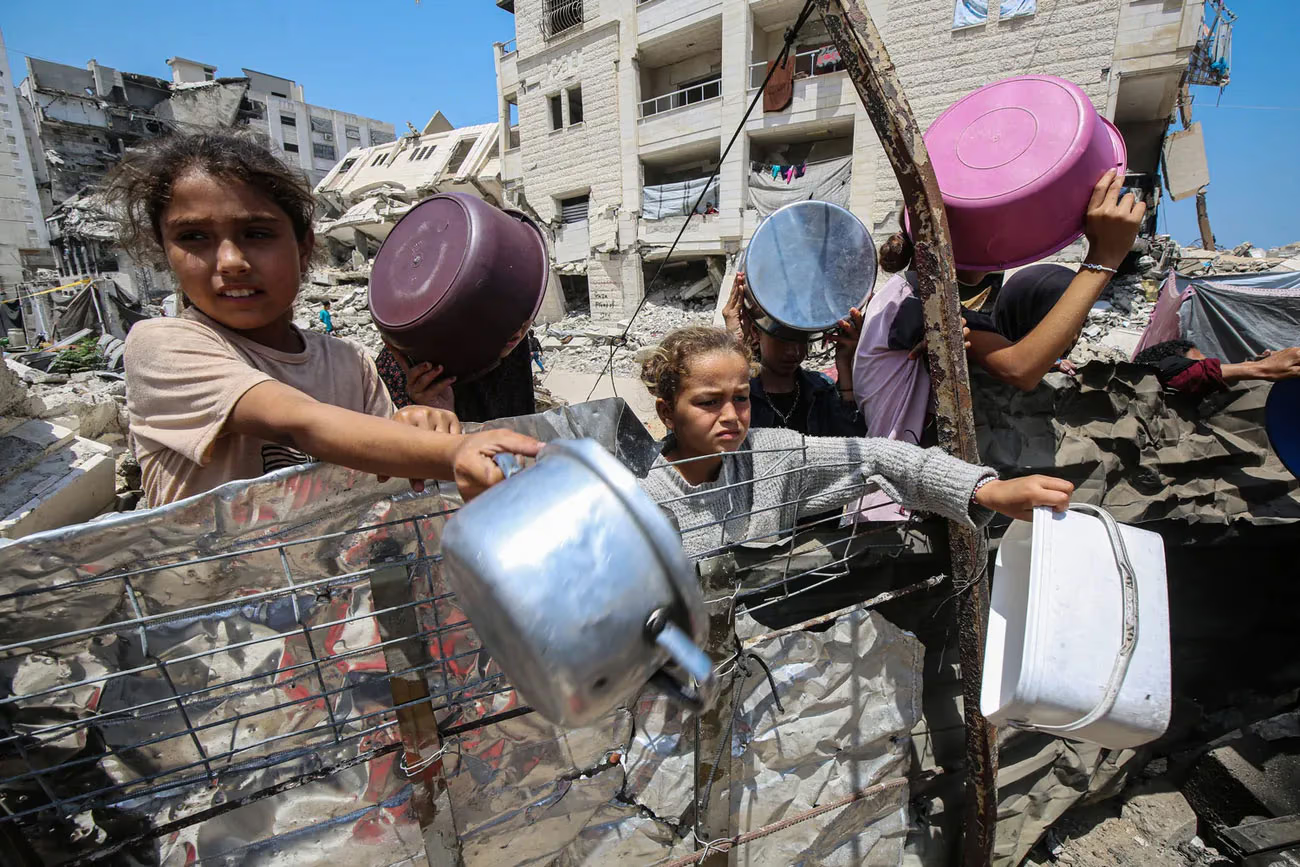
"People Go There Not Knowing If They’ll Come Back Alive."
Israel and the U.S. Have Replaced the UN With Their Own Fund, Distributing Aid Through a Few Sites Marked by Strikes, Stampedes, and Hundreds of Deaths

Israeli Forces Open Fire Again Near Aid Points—Dozens Killed
Israel Insists on Controlling the Relief System, Pushing Out the UN and NGOs

Israel Expands Its Offensive and Partially Lifts the Blockade
Gaza Residents Remain Under Fire Without Shelter or Food

Israel Launches Airstrike on Jabalia
At Least 48 Dead, Including 22 Children

Blockade and Economic Devastation Leave Gaza Without Food
Families Survive on Canned Goods and Aid

